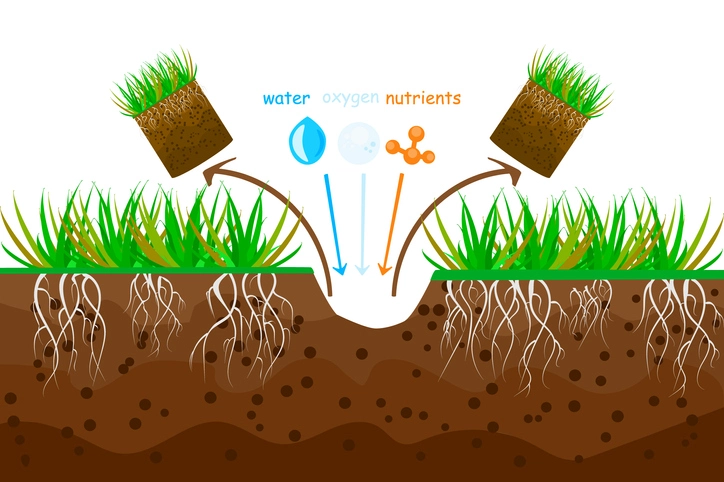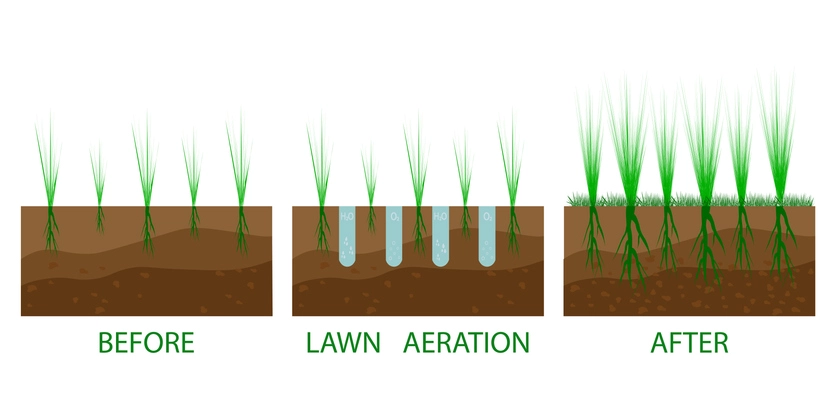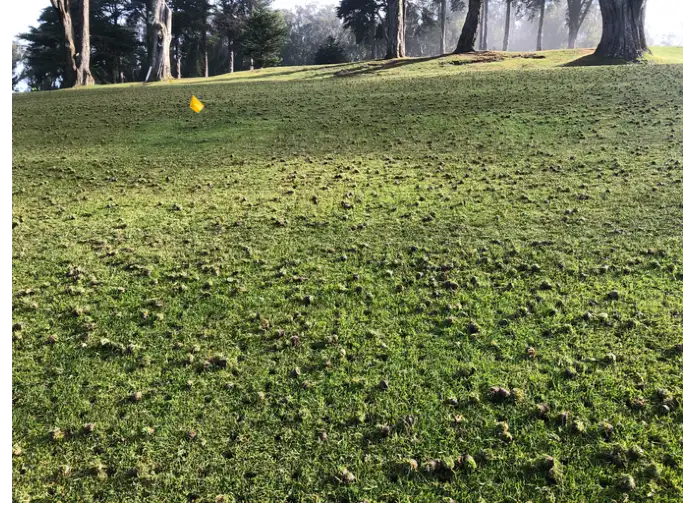
Many homeowners that we work with, from Great Falls to Arlington and everywhere in between, have heard of lawn aerating but don’t know what it really is, or why it’s so beneficial for the health of your turf. But that’s what we’re here for!
What is Lawn Aeration?
With time, it’s natural for soil to become compacted. Foot traffic, hot sun, and heavy rainfall with improper drainage all affect turf, and subsequently, soil. Plus, routine mowing can lead to a buildup of thatch, which is a layer of dead grass, roots, leaves, etc. that collect down at the base of the grass. This thatch makes it much harder for nutrients to get into the roots.
Aeration is what breaks this organic matter up to loosen the soil, allowing for roots to grow deeper and grass to become stronger. Lawn care professionals use aerators to pull small soil plugs (also known as cores) from the grass, dropping them back down onto the lawn as they go.

The Best Time to Aerate Your Lawn
Late summer into early fall is the prime time for lawn aeration, and September is the sweet spot in the Falls Church area. This is a good time because you can take advantage of Virginia’s warmer soil going into winter, prepping your lawn before it goes dormant. Not only does it help set seedlings up to withstand harsh temperatures, but it also gets them ready to grow strong when spring comes around.
Overseeding & Lawn Aeration
What is Overseeding?
Contrary to what you might have thought, overseeding does not mean that you’ve added too much grass seed to your lawn. Overseeding is the process of spreading grass seed directly onto existing turf to provide thicker growth, brighter color, and better resistance to disease. It does not damage or require tearing up existing soil or grass, instead filling in bare spots (both from dead grass, and the pores created from aeration) and crowding out weeds.
Can You Aerate & Overseed at the Same Time?
Yes! Since that soil is loosening up, it’s the perfect time to fill spaces with new seedlings that are set up to thrive with plenty of water and oxygen available. Plus, it also helps to prevent weed seeds from taking up roots in those new open spaces.
Should You Water After Aerating & Overseeding?
Your lawn will need water frequently, but carefully, after aeration and/or overseeding. It should remain saturated with water, but not flooded or submerged, for around 10-14 days to let the new seeds germinate. After that, watering can reduce in frequency but should still be consistent. It’s common to forget, or not realize, that after germination the new shoots of growth benefit from the water to gain strength – plus, there may be a few straggler seeds that germinate during this time.
Properly aerating, overseeding, and watering your lawn makes the germinate rate skyrocket, maximizing your lawn investment and providing the lushest greenery. The right irritation process makes all the difference.

Should You Pick Up Plugs After Aerating?
Nope, those plugs of grass should stay where they are. As your lawn receives water after aeration, these plugs will break down. This helps to balance the nutrients throughout the lawn. The only argument to be made for clearing these plugs is if they fall too close to walkways or pavement and create a buildup. Otherwise, the not-so-pleasing appearance of these plugs will go away after a few days (though it will take longer if you’re not watering as frequently).
Our lawn care specialists are here to answer any aeration and overseeding questions!